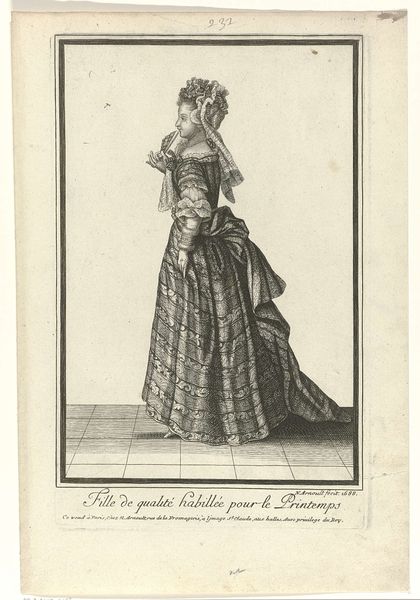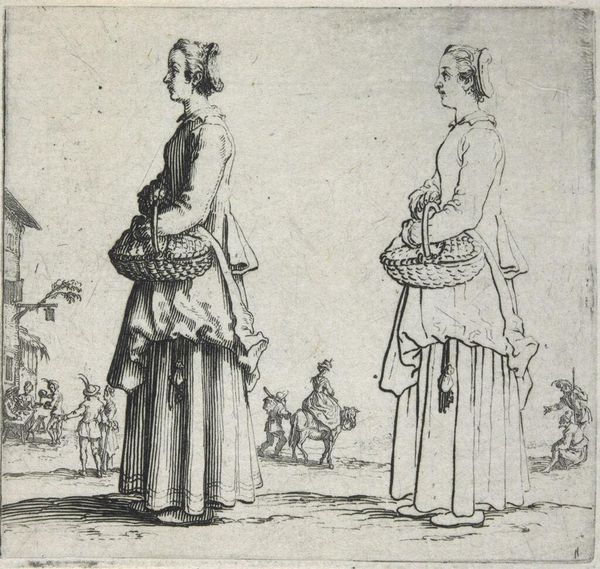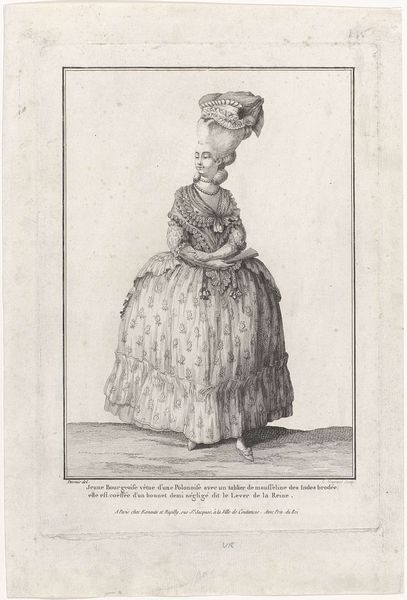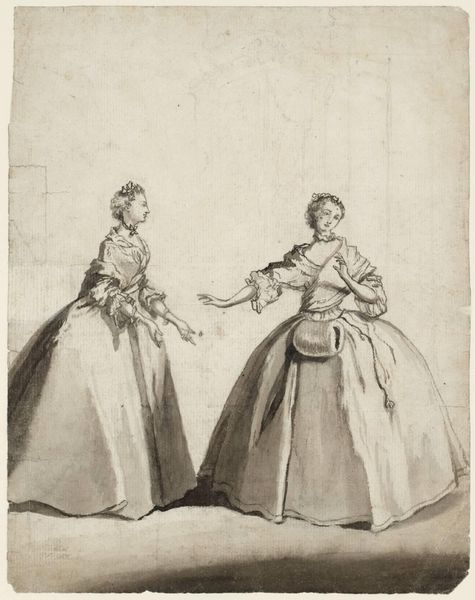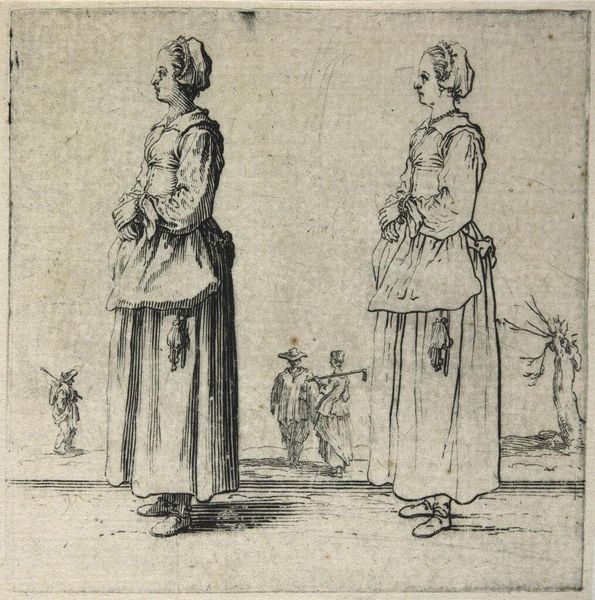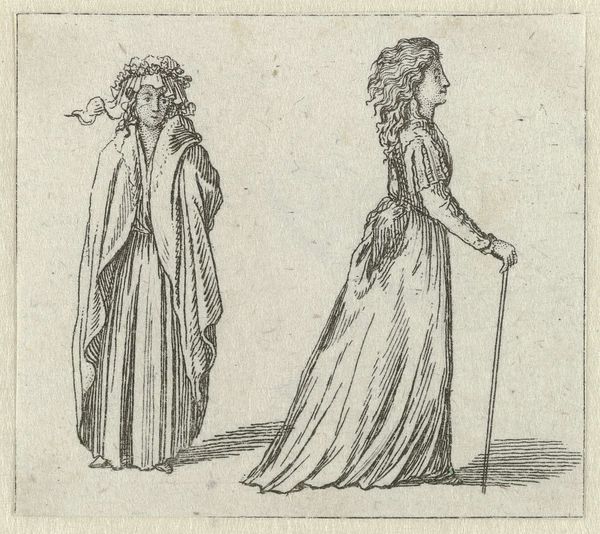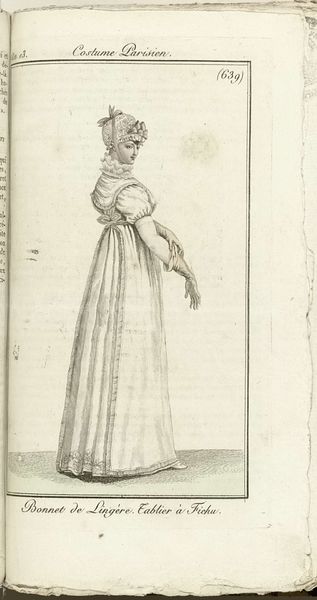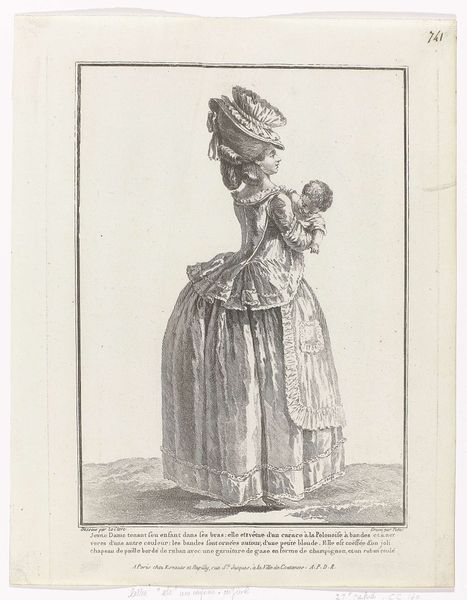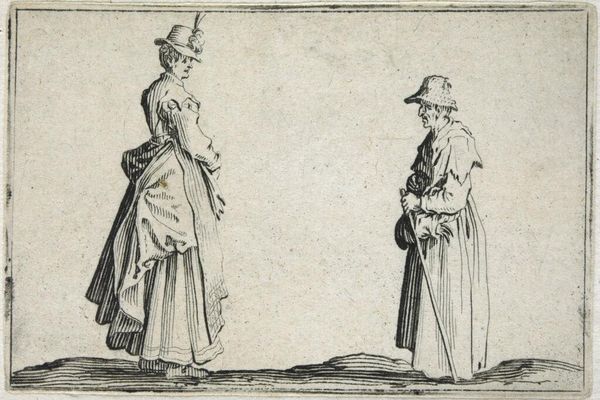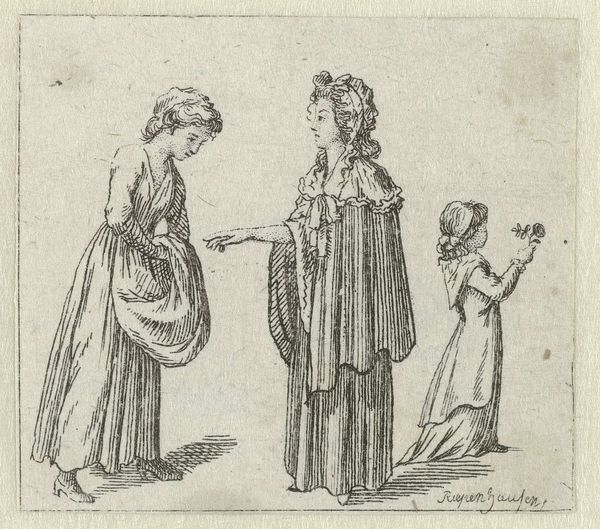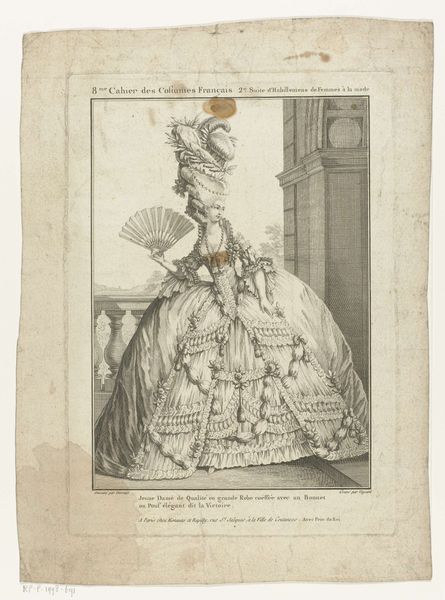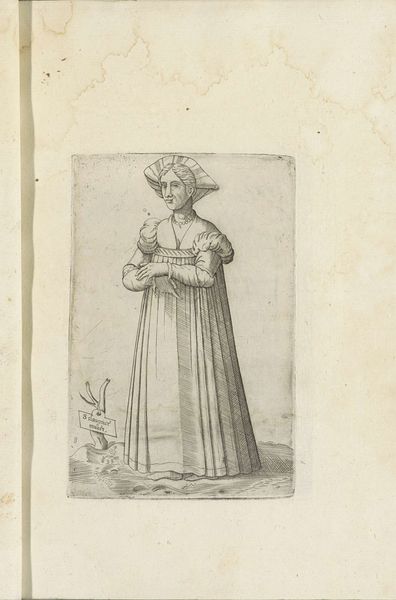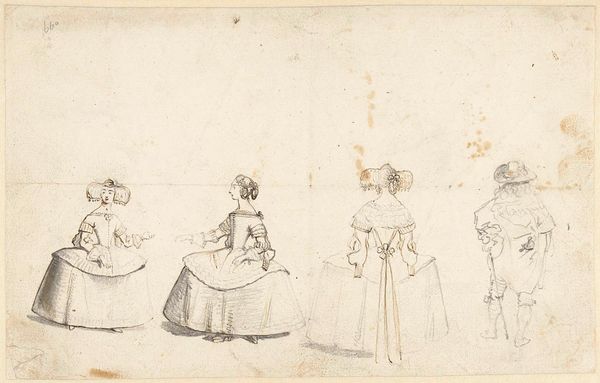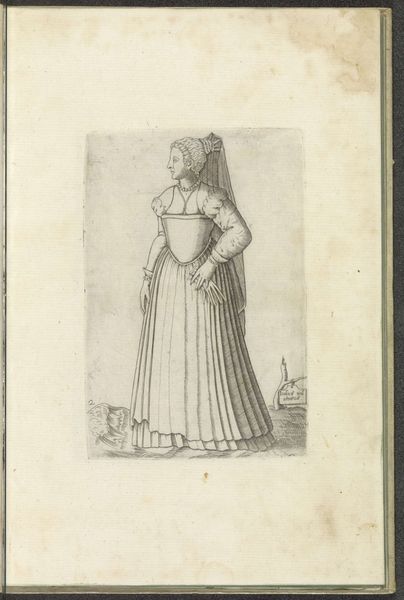
Habillemens de Leipsic ca. 1785-1786: twee vrouwen met waaier en wandelstok c. 1785 - 1786
0:00
0:00
Dimensions: height 52 mm, width 50 mm
Copyright: Rijks Museum: Open Domain
This print, Habillemens de Leipsic, was made by Ernst Ludwig Riepenhausen around 1785 using etching, a process with a fascinating social dimension. Etching involves coating a metal plate with wax, then scratching an image into the wax to expose the metal. The plate is then immersed in acid, which bites away the exposed lines. This is a precise, labor-intensive process, demanding skilled handwork. You can almost feel Riepenhausen’s hand as he carefully rendered the elaborate hairstyles and dresses, the fan, and the walking stick, of the two women he depicted. But etching is also a reproductive medium, capable of producing multiple copies. This democratizing potential aligns with the era’s changing social landscape, echoing the rise of fashion and consumer culture, driven by emerging industrial modes of production, and increasingly available to a wider audience. By understanding the materials, making, and context of this print, we recognize that it's not just a depiction of clothing. It's also a product of its time, intimately tied to the social and economic transformations that were reshaping European society.
Comments
No comments
Be the first to comment and join the conversation on the ultimate creative platform.
